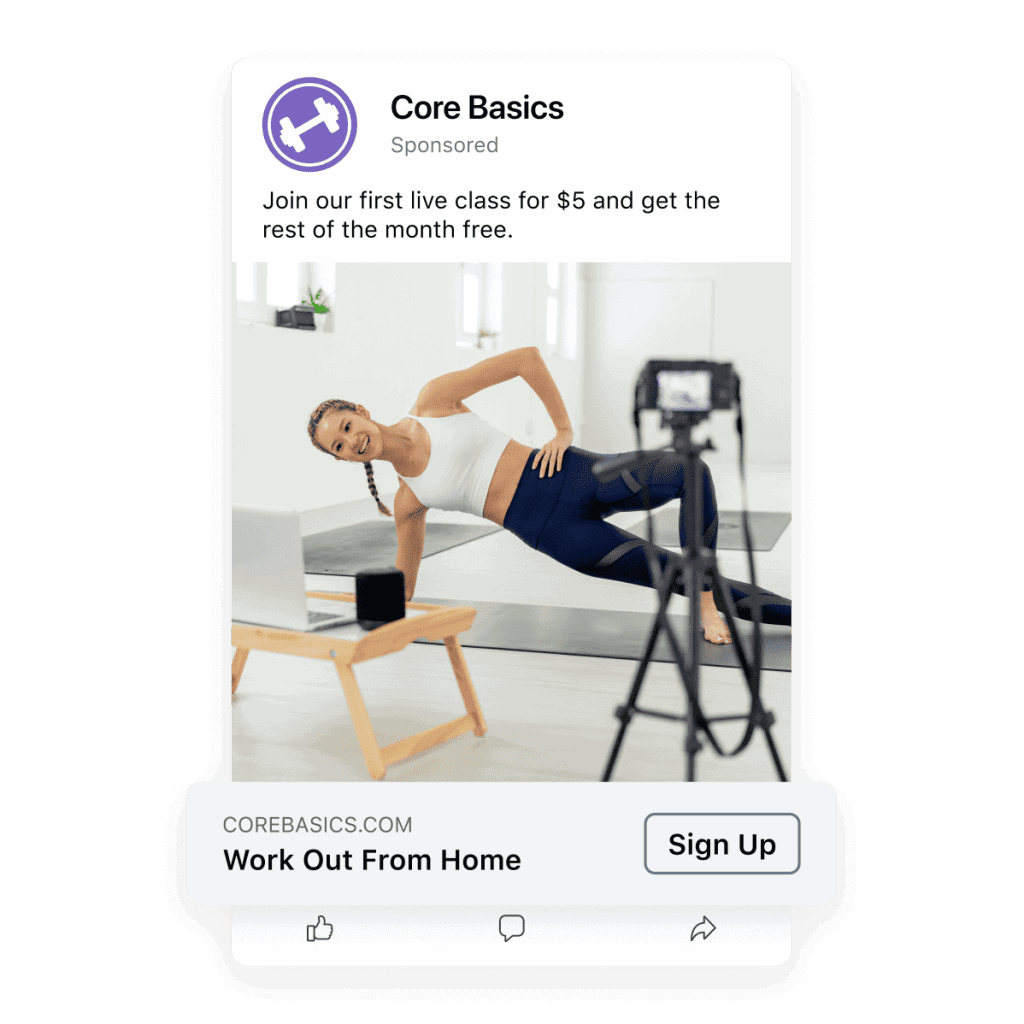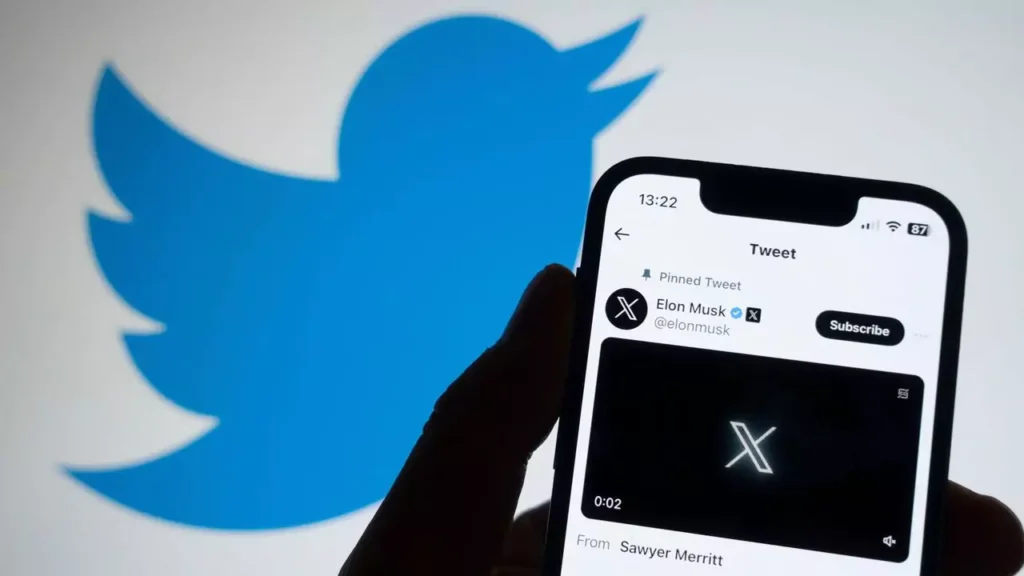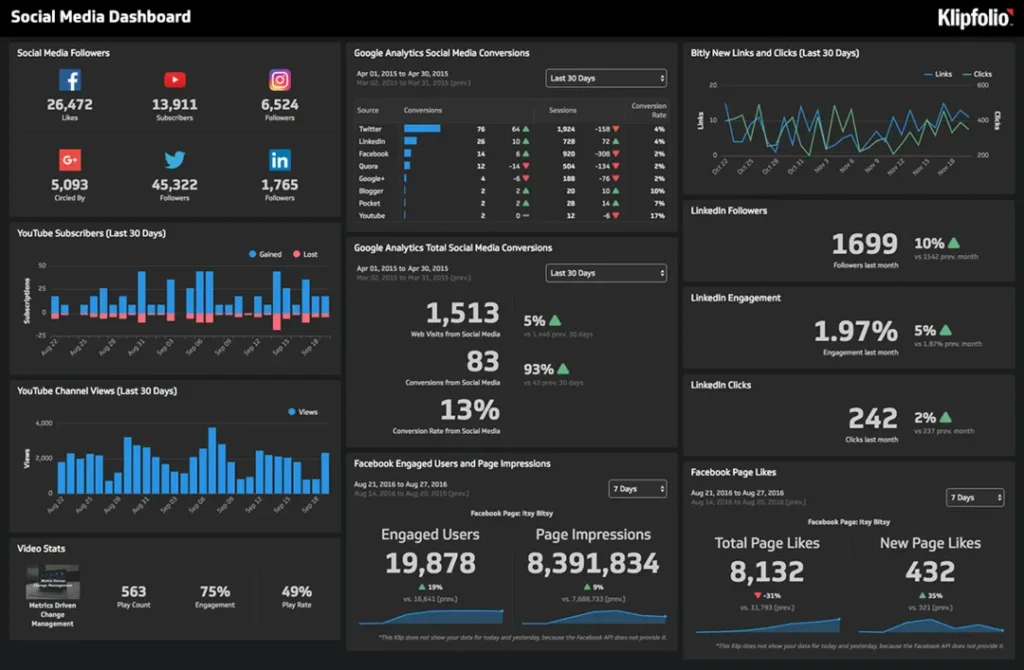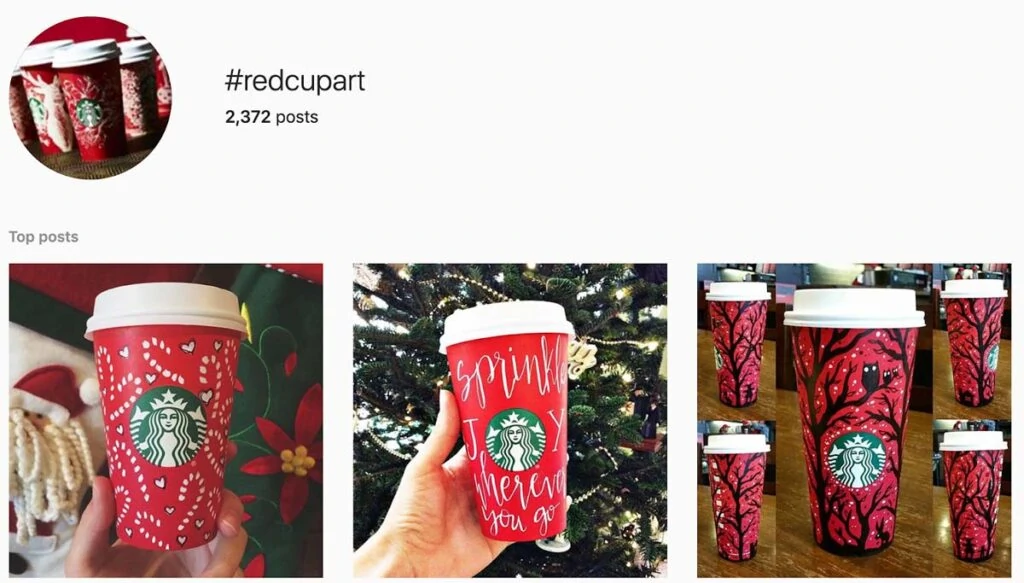Social Media Marketing Spend: How to Avoid Burning Cash
You’ve undoubtedly heard the buzz – social media marketing is the latest trend every business must jump on. Brands are pumping money into Facebook ads, Instagram influencers and X campaigns, you name it.
However, in all these fanfares, it’s easy to get caught up in “shiny object syndrome” and throw money around without knowing when something is worth spending. How much should you be investing in social media marketing? Does more always mean better?
This article will delve deep into social media marketing budgets and spending. We will show how fact differs from fiction by citing cold, hard figures from top brands to the smallest start-ups. Moreover, you will discover innovative strategies for allocating your spending, creative ways that maximise returns and pitfalls that must be avoided at all costs.
So grab some coffee or any other drink that wakes your mind, and put on a scepticism hat as we examine whether your social budget deserves a promotion or pay cut!
Table of Contents
The Heights of Social Media Marketing Spend

Let’s address the elephant in the room: how much are companies spending on social media marketing today? Well, get ready for some shocking news…
According to recent survey data, a typical company uses 25% of its marketing budget on social media! This figure balloons to a staggering 40% among companies dealing with B2C product brands.
It’s enough to make you spray your skinny mochachino all over your Macbook retina display, isn’t it? However, this represents millions of dollars worth of annual social expenses for large enterprise corporations.
Who's Spending What On Social?
However, only some businesses have Saudi prince money. So, let’s see who is doing what with their money when it comes to social media:
- Every year, Target, like other retail giants, blow over $90 million on social ads and campaigns
- Consumer Product Titans Like Coca-Cola reportedly lose about $40-50 million annually
- Nike must spend well above $100 million if they want to reach all these sweaty athletic types
- McDonald’s and other fast food behemoths also enter the hundreds of millions range
- On average, most big B2C companies will invest between 15-25% of their entire advertising budgets in social
- Tech startups and SaaS businesses typically allocate 12-18% towards social
- For B2B brands within the confines of any given budgetary period will be slightly more conservative at approximately 8-12%
…those numbers would make most of us run back screaming into our little establishments. They wouldn’t be doing that if … right?
Does More Social Spend = Better Results?
This is the million-dollar question every marketer has to grapple with eventually. Just because Pepsi lays out hundreds of millions on social, does that mean the local plumber needs to do the same? Or can you still see excellent returns by flying at lower altitudes?
The truth is, there's no simple one-size-fits-all answer. Success with any social media spend depends on a vast number of factors, including:
- Your specific goals and objectives
- The targeting and creativity of your campaigns
- How well do you understand and engage your audience
- The types of social platforms and ad formats used
- How effectively do you track performance and iterate
- The competition and noise levels in your niche
- And about a million other variables!
Examples of Smart vs Dumb Social Spend
Let's look at a couple of hypothetical examples to illustrate the difference between intelligent and inefficient social spending:
Example 1 (Dumb Spend): DerpCorp.com is an online jewellery store that blows $50,000 monthly, boosting semi-viral Facebook posts with minimal targeting, low-relevance creative, and zero conversion tracking. They're spraying the internet with untargeted ads, hoping people will randomly click through and buy $10,000 diamond rings. Social spend ROI = dismal.
Example 2 (Smart Spend): SmartyPants Inc. is a B2B web design agency. They spend $5,000 monthly focused on running highly-targeted LinkedIn ads, X campaigns, Facebook groups, Quora answers, and influencer outreach – all tailored to their target audience of marketing managers at enterprises and mid-sized companies looking to revamp their websites. With excellent content, strong CTAs, and meticulous tracking, their cost-per-lead averages just $35. Social spend ROI = exponential.
The difference is night and day. Simply increasing social media budgets alone won't drive results if your strategy and execution are flawed. More intelligent targeting and creativity trump bigger budgets every time.
Smart Social Spend Strategies to Emulate

So, how do those savvy unicorn companies consistently milk great ROI from their social spending? Here are some of the top strategies the experts employ:
Audience Research and Segmentation
Before spending a single penny on social media, the best marketers invest heavily in researching their audiences inside out. They build rich persona profiles to understand their buyers' demographics, interests, pain points, objections, and behavioural patterns.
Armed with this intel, they can laser-focus their social targeting and creative execution for maximum relevance and impact with each segment. It's all about putting the right messages in front of the right eyeballs.
Channel Selection and Campaign Alignment
There are a billion different social platforms and sub-channels out there these days. The winners study and test voraciously to see which channels resonate best for achieving their goals with their target audiences.
Rather than just spraying ads across every channel under the sun, they develop focused strategies and creative tailored for maximum traction on each high-impact network and campaign type. They align each initiative's objectives, messaging, timing, spending levels, and creative assets.
Creative Testing and Optimisation
Big budget =\ Compelling creative. Even huge companies with bottomless pockets fall flat if their social posts, videos, imagery, and copy simply need to connect with users.
That's why creative testing and constant optimisation need to be prioritised. The top brands are religious about running A/B and multivariate tests to iterate on every aspect of their social creatives – messaging, visual styling, video hooks, calls-to-action, you name it. They treat it as a never-ending process of creativity + data-driven refinement.
Funnel Optimisation and Tracking
It's not just about optimising the creatives either. Savvy marketers are holistic funnel thinkers – they meticulously track user behaviour and engagement across every stage of the social funnel: awareness, interest, desire, and action.
Are ads generating clicks and first engagements? Awesome, but how are those new prospects being nurtured into leads? And then what percentage of those SQLs are ultimately turning into paying customers? With funnel analytics, they can correct and improve every step of the social journey.
Leveraging Cross-Channel Synergies
While distinct campaign strategies are crucial, the social spend masters don't operate in siloed channels. They're always looking for ways their social initiatives can amplify and reinforce other channels like email marketing, website SEO, offline media, content marketing, and more.
For example, a well-oiled retargeting machine will cohesively blend paid social into a coordinated cross-channel experience that spans display ads, inbox re-engagement, and website personalisation to drive high-value conversions ultimately.
Investment in learning and Evolution
Perhaps most importantly, the best of the bunch always continue learning, evolving, and pushing the envelope. They continually invest in training their teams and keeping up with the latest strategies, features, and technologies across platforms.
Because social media is a fast-moving, ever-changing landscape, what works like gangbusters today may lose its potency tomorrow. So, they prioritise cultivating curious lifelong learners willing to experiment and shift gears to ride new breaking waves.
The core pillars are audiences > channels > tracking > tracking> creative. However, an agile growth mindset and culture of learning ultimately enable the best teams to drive consistent ROI over the long haul.
The Contrasting B2B Landscape
B2B brands must work much harder to make their social spending pay dividends. They're dealing with some severe constraints:
- Their target audiences are smaller subsets of professionals
- Products/services are often complex, nuanced, or industry-specific
- Decision-makers are risk-averse and slow to embrace new vendors
- Purchase cycles tend to be much longer and more convoluted
- The chain from social engagement to closed revenue is less direct
So, if you're operating in the B2B realm, you can't treat social media as a direct response cash register like B2C players sometimes can. The game requires more finesse.
Where B2B Social Shines
Does that mean B2B brands should just abandon social media altogether? Absolutely not! When leveraged correctly, channels like LinkedIn, X, and niche communities can be lucrative engagement and demand-gen engines.
The critical difference is recognising that B2B social spending needs to be focused on nurturing relationships, establishing authority/trust, providing value through education, and delivering relevant air cover for larger ABM and sales initiatives. Rather than a hard sell, it's about playing a longer game of brand resonance and top-of-funnel demand shaping.
You don't see B2B ads going viral and making people laugh out loud as much as B2C ones. However, plenty of B2B heavyweights, from IBM to Oracle to HubSpot to SalesForce, have built massive, loyal social audiences by taking more of a consultative “Thought Leader” position and delivering valuable industry insights.
By investing consistently into insightful content, authoritative social engagement, executive personal brands, targeted advertising, and aligned sales enablement – B2B companies can drive massive value and ROI from their social spending over time. It requires a more nuanced, relationship-centric approach than slapping up some raunchy humour and hoping it goes viral this week.
5 Common Social Media Budget Pitfalls

You feel better equipped to make intelligent decisions about your social media spending levels and strategies. But before we get to specific budgeting frameworks, let's quickly run through some of the pitfalls and landmines that can cause social initiatives (and budgets) to go awry:
- Lack of Clear, Measurable Goals Without explicit, measurable, and documented goals, your social efforts will be rudderless. Lack of focus inevitably leads to floundering strategies and wasted spending.
- Underinvesting in Creativity & Production
Social media is a creative game. If you try to cut corners by skimping visual assets, video production, copywriting, and design, your social presence will blend into the distracting noise. - Neglecting Audience Targeting & Segmentation Spraying generalised content aimlessly is a surefire way to tank your ROI. Social spending needs to be intelligently segmented and hyper-targeted to distinct, well-understood buyer personas.
- Overvaluing Vanity Metrics & Undervaluing Core Conversions Don't just get seduced by big engagement numbers or viral moments if they aren't genuinely moving your core business goals forward. Define and slavishly track your highest-value conversion actions.
- Overestimating In-House Skill & Underestimating Platform Complexity Social is nuanced and evolving rapidly – your team likely needs more training, tools, and outside expertise than you think. World-class execution requires dedicated specialists, not just bolting it onto someone's existing duties.
If you can avoid these common tripwires, you'll be miles ahead of most companies trying to navigate the social landscape.
How Much Should YOU Spend on Social?
Enough preamble – let's finally dig into the nitty gritty details of how much you should budget towards your social media marketing efforts.
The frustratingly vague yet truthful answer? It depends.
As we've covered, no one-size-fits-all percentage or dollar figure is optimal for every situation. Your ideal spending level should be determined by the following:
- Your total annual/monthly marketing budget
- Your specific business goals and objectives for social
- How your target audiences behave across social media
- The competitive landscape and saturation in your industry
- Internal skills, resources, and execution capabilities
- And many other variables…
So rather than prescribing fixed percentages, let's explore some helpful frameworks for determining the right level for your unique business context:
Calculate Bottom-Up Based on Specific Initiatives & Channels
One solid approach is first to map out all of the specific social initiatives, channels, and tactics you expect to utilise over the next 6-12 months:
- Paid advertising budgets (Facebook, Instagram, LinkedIn, X, etc.)
- Influencer marketing investments
- Premium tool/software expenses (schedulers, monitoring, analytics, etc.)
- Content production costs (creative assets, videos, etc.)
- Salaries for dedicated social media roles
- Outside agency fees or consultants
- And so on…
Once you've accounted for all those line items, you should have a solid bottom-up estimate for your minimum “baseline” social spending to power those core initiatives.
Then apply some percentage buffers on top of that for paid media testing (15-25%), external training/certifications for your team (5-10%), attending conferences (2-5%), and general flexibility (10-20%).
The total gives you a relatively pragmatic annual or monthly social media budget and spending level tailored for the size and complexity of your particular programs.
Top-Down Percentage-of-Budget Method
If the bottom-up approach seems overwhelming for your situation, you can also use broad percentage ranges as a simple rule-of-thumb starting point:
- B2C Companies: 28-40% of overall marketing budget
- B2B Companies: 12-25% of marketing budget
- Smaller Companies (<$5M rev): 15-30% of marketing budget
- Larger Companies ($20M+ rev): 10-20% of marketing budget
You'd then adjust that percentage up or down based on factors like:
- Your current sales/revenue growth trajectory (more aggressive = higher %)
- Social media usage patterns among your specific target audiences
- How critically important social is for achieving your core goals
- The overall competitiveness and noise levels in your market/niche
- Available in-house skills & desire to out-source certain functions
Those top-down ranges at least give you a reasonably well-researched starting benchmark to build an initial budget proposal before fine-tuning from there.
Measuring & Optimising ROI From Social Spend

Of course, simply determining your social media budget upfront is only half the equation. The other critical component is tracking, analysing, and optimising the returns you generate relative to that spend.
Which ROI Metrics Matter?
Vanity metrics like likes, shares, and reach are meaningless in isolation. Here are some of the ROI metrics that provide much more illuminating insights:
- Cost per lead
- Cost per qualified lead
- Cost per acquisition (for new customers)
- Social-influenced revenue
- Social attribution revenue (cross-channel)
- Return on ad spend (ROAS) and Return on investment (ROI) figures
- Cost per desired conversion action (purchases, signups, demo requests, etc.)
Multi-Touch & Cross-Channel Attribution Complexity
Of course, those juicy ROI metrics can be challenging to capture – especially for consumer brands and ecommerce stores where sales journeys can be messy and non-linear across multiple channels and devices.
That's why sophisticated multi-touch attribution modelling is critical for truly understanding the value and synergies social media provides across your entire marketing and sales funnel. Premium analytics tools using machine learning tactics like Markov models can give you that coveted cross-channel visibility.
When to Invest More…or Scale Back
Armed with concrete ROI data, you can then start actively optimising based on what's working and what's not:
- If your ROAS from paid social ads is > 5x, that's a signal to keep aggressively ramping spend
- If the cost-per-lead from LinkedIn is < $50, it's worth doubling down on that channel
- If certain content pieces, influencers, or hashtags directly contribute to huge conversions and revenue, you know where to shift more resources.
- If organic social isn't delivering leads/sales at an acceptable threshold, that's a cue to scale back investment in those low-ROI activities.
It's all about continuously testing, measuring, iterating, and following the ROI signals to hone your overall social spend mix. Stay data-driven, cut the dead weight, and keep reallocating towards your biggest winners.
Creative Ways to Maximise Social ROI

Budgeting and ROI tracking are crucial, no doubt. But world-class social media marketers continue beyond there when maximising returns from their spending. They also get highly creative in finding innovative ways to stretch their social budgets further:
Leveraging Owned Media and User-Generated Content (UGC)
Competent teams realise that not every social media effort has to involve spending money directly. There's a huge opportunity to amplify the impact of your paid and influencer initiatives by layering in more owned and earned media tactics like:
- You are creating share-worthy content that gets your fans organically posting, commenting, tagging, etc.
- Running engaging social contests and campaigns that incentivise UGC creation
- Highlighting customers' stories, reviews, use cases, etc. across channels
- Encouraging employee advocacy and personal brand-building efforts
- Cultivating loyal communities in Facebook Groups, SubReddits, etc.
- And more!
When you interweave paid initiatives with clever, resonant owned/earned layers, you can stretch your budget further and prime the pump for better-paid amplification.
Retargeting Existing Audiences & Marketing Resurfaces
Most businesses are already spending serious money to attract new prospects through PPC, content marketing, referrals, etc. A potent way to juice more ROI from your social spending is designing nurture campaigns that retarget existing warm audiences on social media.
Whether through paid ads, messaging robots, drip sequences, or dynamic content personalisation – consistently resurfacing tailored messaging and creativity across each person's social feeds and apps can pay considerable dividends in boosting conversion rates from your existing prospect pools.
Embracing Emerging Social Commerce & Community Trends
Social media isn't standing still – innovations and consumer behaviour shifts are constantly emerging. Forward-thinking brands work hard to stay ahead of these evolving trends and find creative ways to test promising new tactics like:
- Live-stream shopping events and QVC-style social showcases
- Direct ecommerce selling via Instagram Shopping, Facebook Stores, etc.
- TikTok's all-new LIVE Shopping and ecommerce ad formats
- Building massive organic audience reach on “It” platforms like BeReal
- Hiring virtual influencers and creators as brand ambassadors
By embracing the bleeding-edge features of hot new channels and formats before your competitors, you can often achieve meaningful differentiation and engagement at lower costs.
Partnering With Creators & Brand Amplifiers
While formal influencer marketing has become very expensive and saturated in some verticals, there are still untapped opportunities to collaborate with niche social creators, industry insiders/analysts, media powerhouses, and brand-avid micro-influencers.
From sponsoring Instagram creator series to funding YouTube video sponsorships to partnering with solo journalists on Facebook Live broadcasts to fueling unofficial “Brand Ambassador” programs at universities and communities – the possibilities are endless for amping up co-promotion without carrying the full freight of mega influencer fees.
Just be sure compliance reviews and clear deliverable scoping are buttoned up!
Tapping Into Rising Social Activism & Purpose-driven Marketing
Finally, an often overlooked avenue for maximising social clout and reach is aligning with more significant societal movements and purpose-driven initiatives. Passionate people are far more inclined to share, discuss, and evangelise brands that embrace meaningful missions.
From crafting LGBTQ+ awareness campaigns during Pride Month, promoting ethical business practices, and supporting prominent non-profits and social causes, there are countless ways to halo your brand with positive social activism efforts.
Not only does this attract loyal followers, but it amplifies word-of-mouth sharing and maximises the reach of any paid media spend. Plus, it strengthens brand authenticity in an era where 63% of consumers prefer purpose-driven companies.
Just be sure your actual business walks the walk, not just a superficial PR tactic!
The Future of Social Media Spend
Let's quickly pan out and contemplate where social media marketing is heading in the coming years.
A few key prognostications:
- Exponentially Rising Spend Levels From our current global social ad spend of ~$160 billion, projections see that number nearly tripling to $466 billion annually by 2027. Brands simply must recognise society's meteoric trajectory.
- AI Content Creation & Hyper-Personalization Advances in AI language models and machine learning will revolutionise the creation of personalised social messaging at scale. Generative AI will become a core part of creative workflows and content operations.
- Social Commerce Ubiquity Social networks are quickly being reinvented as immersive virtual malls and live-shopping channels. In-app checkouts, augmented reality try-ons, and seamless social ecommerce will continue rising.
- The Metaverse Transition
While still in its infancy, the much-hyped Metaverse shift towards immersive XR experiences, virtual worlds, and Web 3.0 constructs will progressively impact how brands activate and engage on “social media”. - Heightened Oversight & Regulation With growing criticism over user privacy, misinformation, and exploitative content monetisation – governments and overseers are already implementing tighter rules to reshape permitted social marketing tactics.
- Social Activism & Platform Ethics
More brands will feel escalating pressures (and opportunities) to embrace more prominent causes and ethical practices as a core part of their social brand identity, messaging, and spending allocation.
Undoubtedly, it's a future filled with thrilling innovations and disruptive new frontiers for teams bold enough to explore. The ante is only getting higher to win in social's ever-intensifying battle for eyeballs and engagement.
Frequently Asked Questions
Is it necessary for my business to have a presence on social media and an allocated budget?
It is impossible for any enterprise not to derive some value from social media if only to create brand awareness, support customers, generate leads, or drive sales. However, the amount you invest heavily depends on factors such as your industry, objectives, target clients, and available resources.
How much do small businesses spend each year on social media marketing?
On average, based on recent survey data, small businesses (i.e., below $5 million annually) usually put aside approximately 18% of their marketing budgets for social media. High-growth startups and ecommerce brands could allocate 25% or more.
Is hiring a social media agency advisor worth the cost?
For organisations lacking internal expertise, it makes perfect sense to go with an agency specialising in developing a social networking strategy. Although expensive, their competence will yield better results and return on investment than experimenting expensively. However, one should closely examine one's case studies and ensure they are culturally well-aligned.
What are the most popular platforms used for marketing through social media nowadays?
The top platforms where most companies spend most of their money on social advertising are Facebook/Instagram, X, LinkedIn, YouTube, and, increasingly, TikTok/Snapchat. Nevertheless, other platforms suit different audience personas differently since various platforms perform best at achieving different targets.
How often should I post new updates on my profiles?
There is no hard rule since ideal posting frequency varies depending upon factors including bandwidth restrictions, objectives at hand, content development capabilities (content creation), customer preferences and what particular channels you are leveraging. However, experts generally suggest that major websites be updated not more than five times every week so as not to distract but remain relevant.
What are typical engagement rates for likes or follows per post compared to the number of page views?
Engagement rates differ from industry to industry, but on average, most social sites typically have a fairer engagement rate of between 0.5%-3% and conversion rates of 2%-5% for standard B2C brands. There is a lower expectation for B2B companies.
